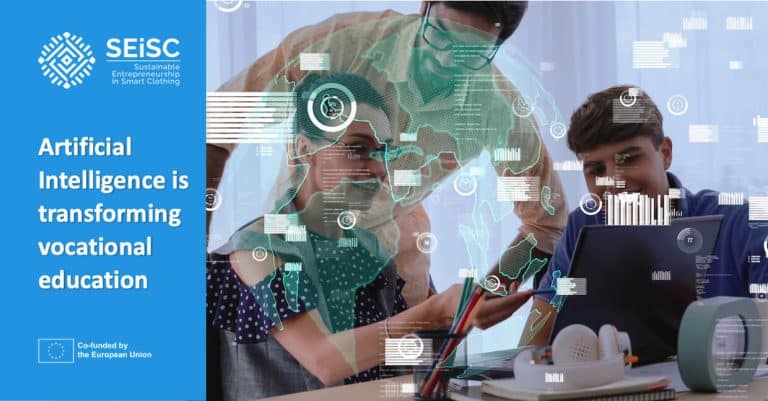Artificial intelligence no longer belongs to science fiction. It now shapes how people teach and learn, especially in vocational training. AI has started to reshape vocational education by personalising learning, enhancing curriculum design, and strengthening hands-on training through automation and robotics. The European project SEiSC – Sustainable Entrepreneurship in Smart Clothing, led by Lounais-Hämeen koulutuskuntayhtymä with partners from six countries, highlights this shift.
SEiSC offers a concrete example of how vocational training can integrate AI. Through virtual simulations powered by AI algorithms, learners explore entrepreneurial scenarios in the sustainable fashion industry. They can experiment, make mistakes, and learn from them, without real-world consequences.
Recent studies suggest that AI can effectively support personalised learning and assessment, potentially making vocational training more efficient. However, a significant knowledge gap remains: many still don’t know how to use AI to support the practical, hands-on learning that defines traditional vocational education.
The real challenge isn’t technological, it’s pedagogical. How can educators integrate AI while preserving the essential practical elements of vocational training? AI might improve workplace simulations, match students with apprenticeships, and tailor curricula to specific career paths.
The future of vocational education follows a hybrid model. In this model, AI doesn’t replace practical experience; it enhances it with personalised pathways, instant feedback, and adaptive learning scenarios. To make this transition work, institutions must invest not just in technology but in training educators to use it effectively.


